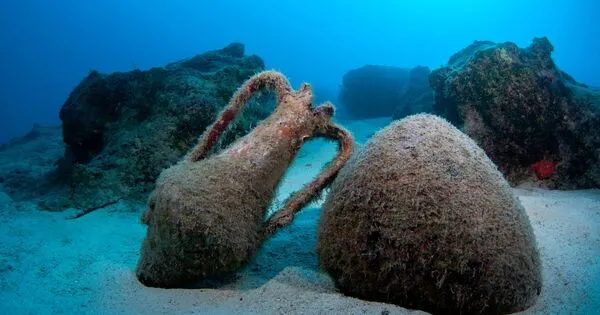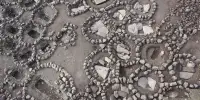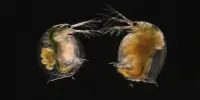During the Roman Empire, wine was made in coastal Italy using native grapes in jars waterproofed with imported tar pitch, according to researchers. Three Roman period amphorae from a seabed deposit near the modern harbor of San Felice Circeo, southeast of Rome, were examined by a team from Italy and France.
Grape derivatives and pine were detected in the jars using a combination of chemical markers, plant tissue residue, and pollen. According to the researchers, the amphorae were used in both red and white winemaking processes, and the pine helped to create tar for waterproofing the jars and possibly flavoring the wine. Similar findings have been made by archaeologists at other ancient sites.
According to a study published in the open-access journal PLOS ONE by Louise Chassouant of Avignon University and colleagues, winemaking practices in coastal Italy during the Roman period included using native grapes to make wine in jars waterproofed with imported tar pitch.
If there was a message to be retained from the reading of this article, it would be related to the multidisciplinary methodology to be applied. Indeed, by using different approaches to unravel the content and nature of the coating layer of Roman amphorae, we have pushed the conclusion further in the understanding of ancient practices than it would have been with a single approach.
Louise Chassouant
Three Roman period amphorae (wine jars) were studied from a seabed deposit near the modern harbor of San Felice Circeo, Italy, about 90 kilometers southeast of Rome. Grape derivatives and pine were detected in the jars using a combination of chemical markers, plant tissue residue, and pollen.
The evidence suggests the amphorae were used in both red and white winemaking processes, while the pine was used to create tar for waterproofing the jars and perhaps also flavoring the wine, as has been observed at similar archaeological sites.
The grapevine pollen matches wild species from the area, suggesting these winemakers were using local plants, although it remains unclear whether these were domesticated at the time. The pine tar, on the other hand, is non-local, and was likely imported from Calabria or Sicily based on other historical sources.

The authors emphasize the benefit of this multidisciplinary approach to characterize cultural practices from archaeological artefacts. In this case, the identification of plant remains, chemical analysis, historical and archaeological records, amphorae design, and previous findings all contributed to the conclusions of this analysis, providing an example of methodology for interpreting a history beyond the artefacts which would not be possible using a single technique.
The authors add: “If there was a message to be retained from the reading of this article, it would be related to the multidisciplinary methodology to be applied. Indeed, by using different approaches to unravel the content and nature of the coating layer of Roman amphorae, we have pushed the conclusion further in the understanding of ancient practices than it would have been with a single approach.”
The importance of a multidisciplinary approach to characterizing cultural practices from archaeological artifacts was emphasized by the research team. According to Chassouant, plant remains identification, chemical analysis, historical and archaeological records, amphorae design, and previous findings all contributed to the conclusions in this new study. It also demonstrates methodology for interpreting a history beyond the artifacts, which would be impossible to do with a single technique.
In a press release, study lead author Louise Chassouant of Avignon University says, “If there was a message to be retained from the reading of this article, it would be related to the multidisciplinary methodology to be applied. In fact, by using different approaches to unravel the content and nature of the coating layer of Roman amphorae, we have pushed the conclusion further in the understanding of ancient practices than a single approach would have.”
















